d+Au ridge: Charge Identification -- FTPC Global tracks instead of primary tracks
This page is documentary purpose.
Motivation:
FTPC charge identification ability is important in d+Au ridge study.
When we looked at primary tracks in TPC-FTPC dihadron correlations, the near-side ridge only comes from positive associated particle for 1-3 GeV, Au-side, 0-20%.
For the primary tracks, it is reconstructed using the hits in FTPC and primary vertex in TPC. While the global tracks, it is reconstructed only using the hits in FTPC. So the primary track may have distorted the momentum reconstruction, which will results in the wrong charge identification.
Study the dihadron from the trigger particle as the TPC primary tracks with the associated particle as the FTPC global tracks will give information on how likely that happened and will it change our conclusion.
Method:
Dihadron correlation
Trigger particle in TPC, primary track . Associate particle in FTPC, globa track. The positive vs negative charge associate particle. The dihadron correlation below shown is ZYAM substracted.
Data set:
Run3
|Vz| < 50 cm
primary track for TPC and global track for FTPC
nHitsFit > 25 points for TPC, 5 points for FTPC
nHitsFit/nHitsPoss >= 51%
globa dca < 3 cm
|eta|<1 for TPC, 2.8<|eta|<3.8 for FTPC
Results:
For primary tracks in both TPC and FTPC see:
drupal.star.bnl.gov/STAR/blog/yili/dau-ridge-charge-identification-ftpc-eta-dependence
Instruction on how the figures organized:
Each table is one pT pair. Here trigger and associated particle use the same pT bins.
Each row: Au-side 0-20%, d-side 0-20%, Au-side 40-100%, d-side 40-100%.
Note: The dihadron correlations magnitude below needs scaled by 1/2.
1. 0.15 < pT < 0.3 GeV/c
 |
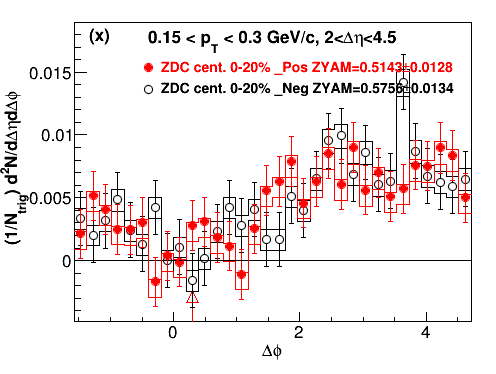 |
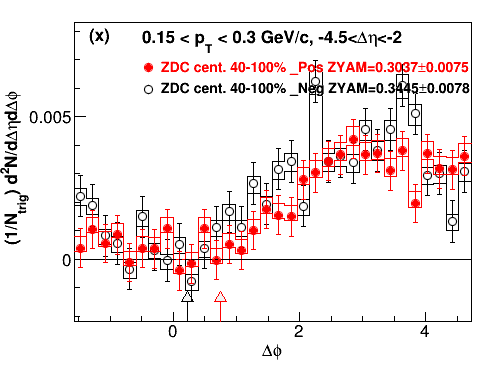 |
 |
Not enough statistics for conclusion.
2. 0.3 < pT < 0.5 GeV/c
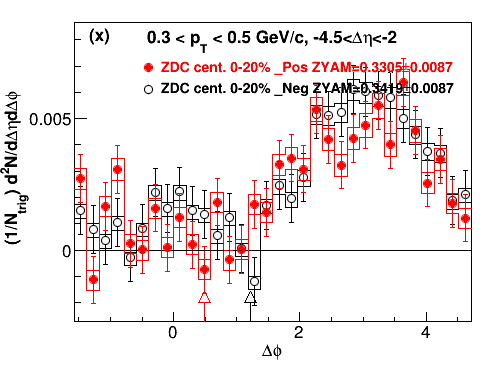 |
 |
 |
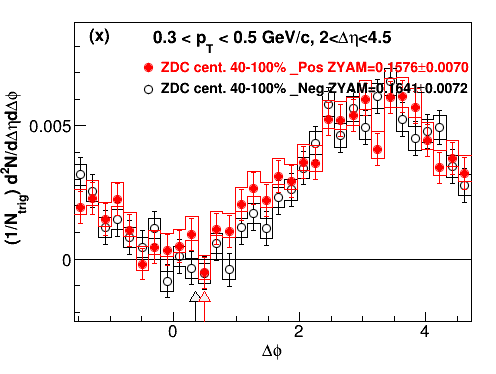 |
Some structure for both neg. and pos. in Au-side, 0-20% on near-side?
3. 0.15 < pT < 0.5 GeV/c
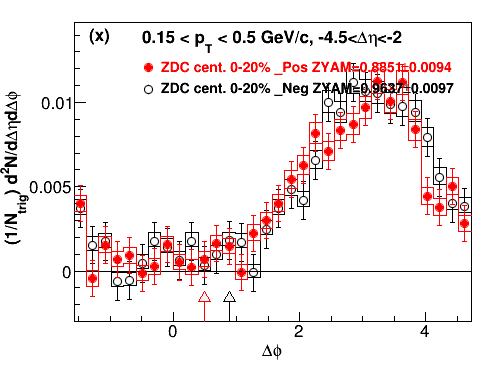 |
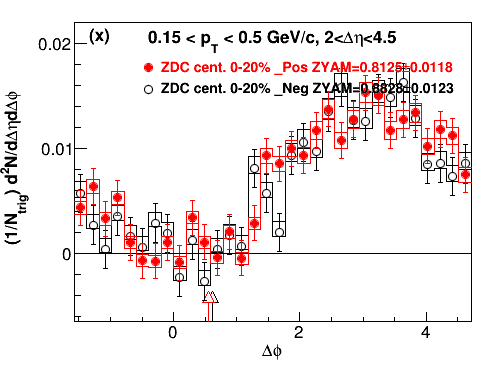 |
 |
 |
No near-side ridge seen.
4. 0.5 < pT < 1 GeV/c
 |
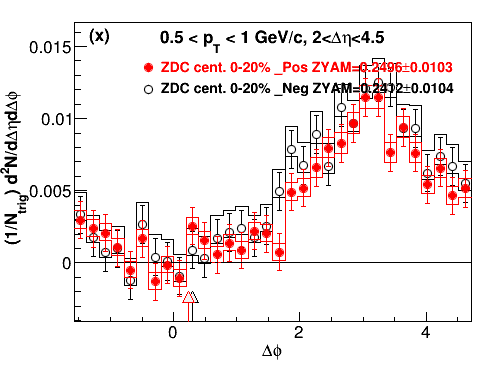 |
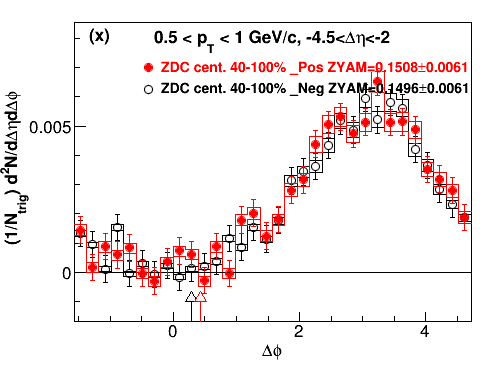 |
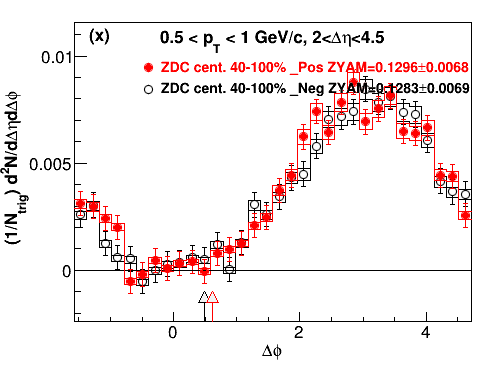 |
Near-side ridge for BOTH Positive and Negative associated particle! This is different from primary tracks result, where the ridge is only for positive.
5. 1 < pT < 2 GeV/c
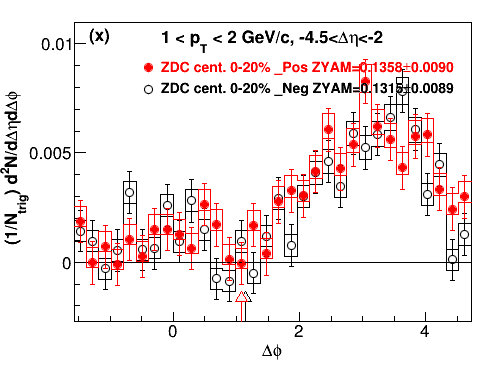 |
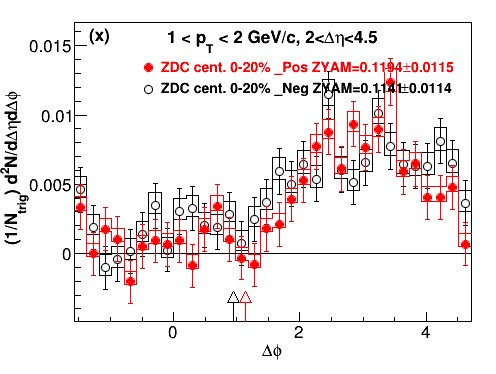 |
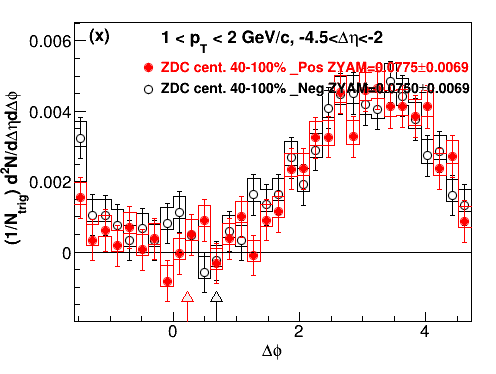 |
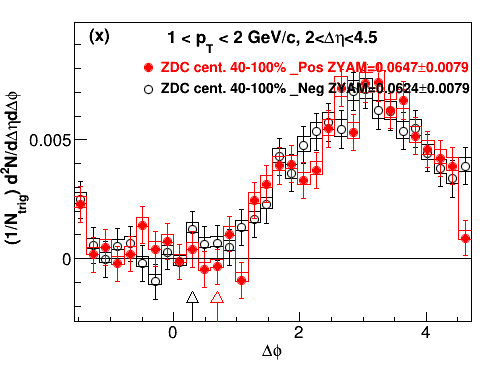 |
Near-side ridge for BOTH Positive and Negative associated particle and Both Au- and d-side! This is different from primary tracks result, where the ridge is only for positive, Au-side.
6. 1 < pT < 3 GeV/c
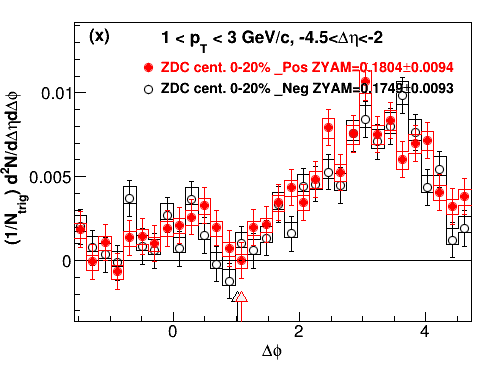 |
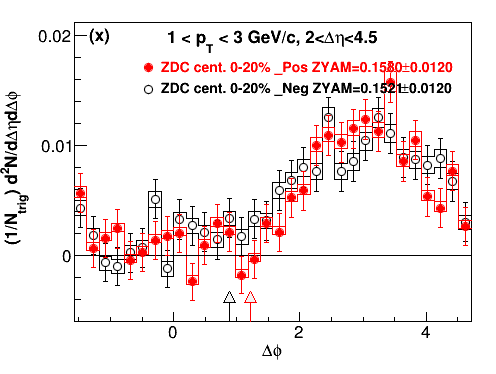 |
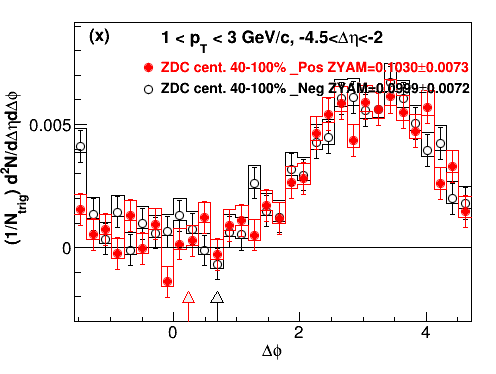 |
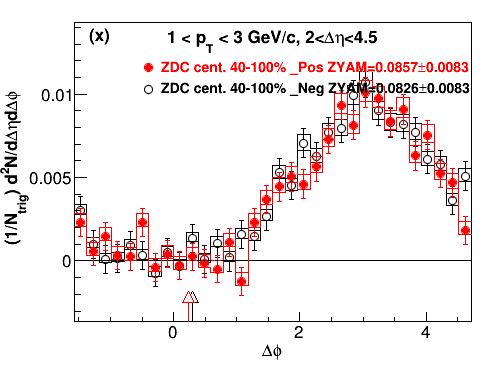 |
Near-side ridge for Both Positive and Negative associated particle and Both Au- and d-side (Au-side is stronger.).
Conclusion:
Global tracks (FTPC) suggested there is no associated charge dependence for near-side ridge. There is also some near-side ridge for d-side.
- yili's blog
- Login or register to post comments
